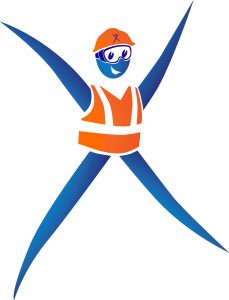 So what’s the problem?
So what’s the problem?
Next time you’re cruising down the highway, think about your travel companions—no, not your dear family, friends, or dog happily hanging his head out the window; I’m talking about the millions of tons of corrosive, explosive, flammable, poisonous, and radioactive materials that are being transported across the country. Using the very roads you traverse every day, they pass by your peaceful suburban neighborhoods, endangering the lives of all you love.
Oh no! Not the children! Spare the children!
Yes, the children. And the grown people. And the non-people (your dog, birds, trees, entire ecosystems). Thankfully for you and I, as long as everyone is doing their job correctly, the children shall be spared. You see, the Department of Transportation (DOT) cares about the children—and everything else—in all of America, from sea to shining sea. The DOT is in charge of enforcing the regulations established by the Hazardous Materials Transportation Act (HMTA), which were put in place to prevent spills, releases, and accidents that would endanger human health (i.e. The children!)
So what exactly is a “hazardous” material?
First of all, you should know that hazardous materials can be ingredients, wastes, water/wastewater treatment chemicals, cleaning chemicals, aerosol cans, compressed gases, and other industrial chemicals.
DOT says that a substance is hazardous if it is classified under:
- CERCLA hazardous substances
- Hazardous wastes (49 CFR 262)
- Marine Pollutants (Appendix B)
- Material meeting criteria for hazard classes and divisions under part 173
- Material identified as hazardous in 172.101
(Section 172.101 contains the Hazardous Materials Table. This all-knowing table lists and gives generic descriptions of several thousand commonly transported hazardous materials. From OSHA’s hazardous chemicals, to EPA’s hazardous wastes, to EPA’s CERCLA list of hazardous substances—this table practically has it all!)
Material that meets one of DOT’s nine hazard classes:
- Class 1: Explosives
- Class 2: Gases
- Class 3: Flammable & Combustible Liquids
- Class 4: Flammable Solids, Spontaneously Combustible, or Dangerous When Wet
- Class 5: Oxidizers of Organic Peroxide
- Class 6: Poisons
- Class 7: Radioactive Materials
- Class 8: Corrosives
- Class 9: Miscellaneous Hazardous Material
Planes, Trains, AND Automobiles??
Yup, and boats! All transportation modes are regulated under federal regulation 49 CFR Subchapter C. So if your facility has shipped or received any of the hazardous materials in the Hazardous Materials Table—using any form of transportation—you’ve got to comply to with the regulations.
Hey, shippers! Here’s what you have to do:
- Determine whether a material meets the definition of a hazardous material
- Assign a proper shipping name
- Assign a class/division
- Assign an identification number
- Properly package
- Properly mark and label
- Perform employee training
- Utilize compliant shipping papers
- Use emergency response information
- Provide an appropriate emergency response telephone number
- Placard loads appropriately
- Create and maintain a security plan
- Report incidents appropriately
So which employees have to be trained?
Hazmat employees, of course! They need to complete DOT training within 90 days of employment, whenever there is a change in job function, and once every 3 years, no matter what.
And “What’s a hazmat employee?” you ask. Any employee who directly affects the transportation of hazardous materials! This includes anyone who:
- Is an owner-operator of a motor vehicle that transports hazardous materials
- Loads and unloads hazardous materials
- Handles hazardous materials
- Prepares hazardous materials for transport
- Is responsible for the safety of transporting hazardous materials
Don’t forget to DOT your ‘i’s (and cross your ‘t’s, of course)
You must complete DOT form 5800.2 and pay annual fees if you are involved with the transportation of:
- Radioactive materials, explosives
- Materials that are poisonous by inhalation
- Bulk packaging (>3,500gallons/468ft3)
- Non-bulk shipment of >5,000lbs of one hazard class requiring placarding
Spill the beans!
If there is a fatality or hospitalization, property damage exceeding $50,000, a public evacuation lasting one hour or more, or a radioactive or etiologic spill you must report a transportation incident to DOT!
To report a transportation incident:
- Send a notification by telephone to the National Response Center at 1-800-424-8802 within 12 hours of the incident
- Send a written report on DOT Form 5800.1 within 30 days of the incident
This is Smart Alex, reminding you to keep your hazmat under control—for the sake of the children!

 So what’s the problem?
So what’s the problem?